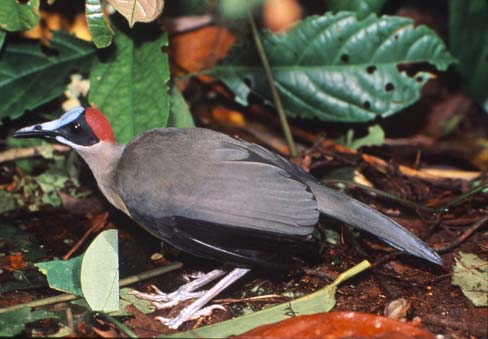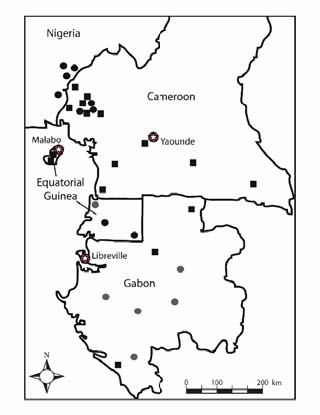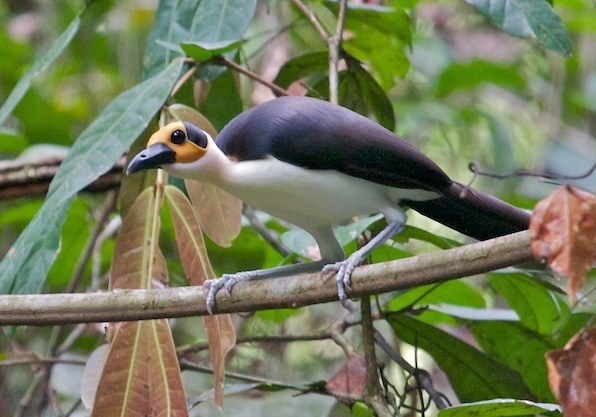One of the most elusive and enigmatic birds of the African rainforests is the rockfowl (Picathartes sp., Fig. 1). The two species that comprise the whole family are listed as vulnerable on the World Conservation Union (IUCN) Red List of Threatened Species. Very little is known about rockfowl, and our goal is to study the biology of this species in order to be able to make informed conservation decisions to preserve it from extinction. In particular, we are studying the influence of human-caused habitat fragmentation on the structuring of populations.
Rockfowl breed in small colonies near islebergs (rocky outcrops) in the rainforest in Central Africa. Although they inhabit their breeding site almost year round, rockfowl often disappear to unknown environs for about a month after breeding season. Breeding colonies, which are often small and widely dispersed across the forest, must presumably rely on an exchange of individuals and their genes to maintain viable populations. Due to this interdependency, the destruction of a single breeding colony or dispersal pathways could potentially have severe implications for many connected colonies.
Our study combines extensive fieldwork to collect rockfowl DNA samples with analytical methods from the newly emerging research field of landscape genetics. It integrates population genetics, landscape ecology, and spatial statistics, and allows us to identify climatic, environmental (for example, tree cover), and ecological factors that influence population structure and dispersal abilities of target species. In combination with fast-evolving genetic markers, it is a powerful tool that enables us to study recent changes, such as those caused by humans, in high-resolution scales. We utilize satellite remote sensing data that provide a wealth of detailed environmental information. In addition, we take DNA samples from birds that we capture and release unharmed in both disturbed (in various degrees) and undisturbed dense rainforest areas in Cameroon, Gabon, and Equatorial Guinea (Fig. 2). Our work will identify areas that are of particular importance to the conservation of rockfowl. Because this species is a flagship-favorite of many birdwatchers, local communities could benefit from carefully regulated ecotourism in these areas. In addition, other threatened species, from plants to mammals, could find a safe haven where rockfowl habitat is protected.

Fig. 1. Grey-necked rockfowl (P. oreas). Photo: Doug Wechsler, VIREO

Fig. 2. Known (black) and potential (grey) breeding sites of the grey necked rockfowl (P. oreas) in Africa. Some sites comprise multiple breeding colonies. Black squares represent sites that will be sampled for this research initiative.

